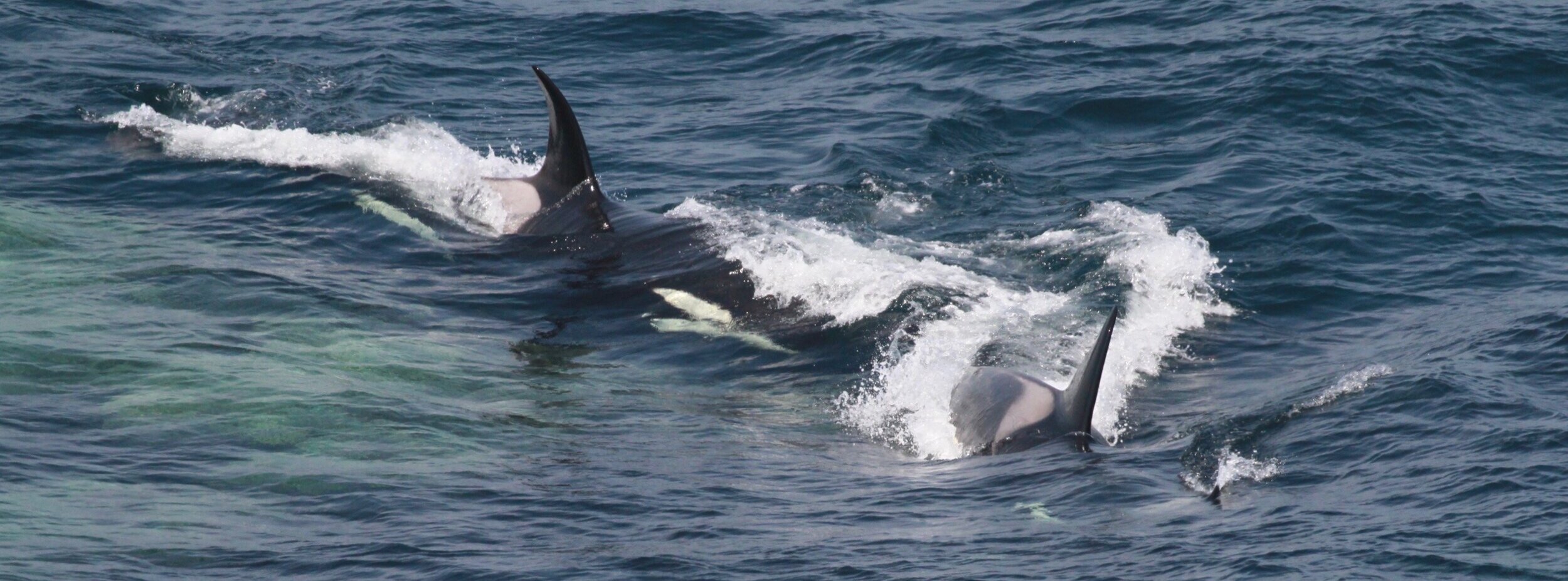Wild About: Orca
Orcas, or Killer Whales as they are also known, are perhaps one of the most instantly recognisable animals on the planet. Enigmatic, large, powerful, strikingly marked, predatory and super-intelligent; they have all the characteristics and charisma of both hero and villain in the animal kingdom. As a result they draw considerable attention from us human observers.
For many people Orca are the focus of travels abroad, the highlight of an experience on the sea. They are a true bucket list species, but did you know, you don’t have to leave the UK to see them? This article will explain how, when and where to see Orca in the UK.
Orcas hunting Seals on the Caithness coast
British Columbia, Norway, Strait of Gibraltar and Monterrey Bay are all well-known Orca watching regions, but Scotland is rapidly ascending to a similar status. The North Atlantic is home to an estimated 15,000 Orcas between Canada and Norway. In the northeast Atlantic a more recent survey estimated 14,000 Orcas from the northern North Sea, Southern Norway to the Barents Sea. There are also concentrations around Iceland, the Faroes and the northern and western fringes of the British Isles. The latter population (known as the West Coast community) is a small and sadly declining community. Orcas are a highly social species with a very complex social structure. In many areas they form distinct ecotypes; ecologically distinct forms that have specific social structures, seasonal distributions, feeding preferences, visual characteristics and vocal repertoires leading to reproductive and genetic isolation. In the North Atlantic these ecotypes are poorly defined (to our eyes) however we are aware of complex population structures around the Scottish coast. This includes the West Coast community and at least two different populations around the Northern Isles, Caithness and Sutherland including animals from the Icelandic summer-spawning Herring-feeders and further offshore the North-east Atlantic Mackerel-Feeders (Carwardine, M. (2020) Handbook of Whales Dolphins and Porpoises Bloomsbury).
Orcas are one of the most adaptable, let alone enigmatic marine species on the planet. Here a Type C (Ross Sea) Orca surfaces next to Emperor Penguins almost as far south as any mammal occurs on Earth.
The West Coast community is now reduced to just seven or eight individuals, the most recognisable of all be being the bull (male) named ‘John Coe’. He has been spotted from the eastern coast of Scotland as far around as southern Ireland. The Hebrides and particularly the Minch seem to offer the best chance of encountering these iconic animals however in recent years only the two bulls have been seen, raising questions about the location of the females. They have failed to produce any offspring since the 1990’s and in 2016 Lulu, one of the females, was found dead on Tiree. Whilst the cause of death was entanglement, analysis of tissue revealed the highest levels of PCB contamination ever recorded in the world in this species. The results also showed that despite being of a suitable breeding age Lulu had never been pregnant. High levels of PCBs are known to cause infertility and poor health. It is likely that this community will become extinct in the not-too-distant future.
Views along the UK coast can be exceptionally close
Thankfully the fortunes of those around the Northern Isles are much better. Approximately 50 animals move south from Iceland annually to the Northern Scottish coast where they can now be reliable seen from shore. In fact, three of the pods (the “27s”, “64s” and “65s”) may now be resident around the British coast, with sightings of the “27s” around Shetland already in 2021. Their movements in this region generally seem to be associated with prey, including seals and small cetaceans; around the Scottish coast that brings them close to our shores. Offshore, beyond the reach of our optics, Orca from Mackerel-feeding populations can be found.
The population structure, distribution and behavioural traits are complicated but the important thing for the benefit of seeing Orca is that, especially in summer, Orca arrive on our northern coasts to hunt seals.
You can find a plethora of information about North Atlantic Orcas here and an incredibly detailed synopsis of Orca populations is written up in ‘Handbook of Whales, Dolphins and Porpoises’ by Mark Carwardine. If you haven’t already got this book it is an invaluable compendium to anyone interested in Cetaceans. Available here.
Where Can I see Orcas in the UK?
Orcas are predominantly found along the north-western and northern coasts of the UK. The best locations are promontories and headlands that provide the widest view possible. Around Shetland they can appear anywhere so it is advisable to give yourself the biggest coastal vista possible. Key sites to watch from are:
Caithness: Duncansby Head (also Dunnet & Noss Head)
Sutherland: Strathy Point & Stoer Head
Highland: Neist Point, Skye
Western Isles: Tiumpan Head, Lewis
Moray Firth: Burghead Headland & Tarbat Ness
Orkney: Scapa Flow & South Ronaldsay
Shetland – sightings are possible anywhere around the Shetland coast
Many of these sites and regions have specific Facebook groups for sightings which are listed below under resources.
Duncansby Head, Caithness is not only a superb place to watch for Orca, it’s also spectacular!
When can I see Orca?
The peak time to see Orca off the British coast is late-spring and then into the summer and even early Autumn. More recently a number of individuals have remained around Shetland all year. The West Coast Community is resident however seeing them requires a lot of luck simply as there are so few animals remaining and they patrol a huge area.
To maximise your chance of success try:
Caithness - late-May/June
Orkney - late-May/June/July
Shetland - April-November
How do I see Orca?
Planning, patience, a little luck and as many eyes as possible all contribute to seeing Orcas off the British Coast.
Put yourself in the right areas at the right time of year and keep your eyes peeled. Whale watchers are rewarded for time spent looking for species such as Orca and there is no exception to the rule here. If you can go with friends or join a group this will also increase your chances – the more eyes the better and company also helps to keep spirits high if the sea is quiet. If you can bias your viewing to good, calm sea condition days this will increase your odds of detecting them.
Top tip: Remember to also scan very close to shore as many encounters are with groups just tens of metres (and closer!) from the coast as they hunt seals.
Sighting Cues
For a large black and white animal they can occasionally be difficult to detect (especially in rougher sea conditions). Even the huge dorsal fins of bulls can throw people off guard, especially if surfacing away or towards the observer when it can look almost stick like!
Blow
With good light the blow of Orcas can be seen at several kilometres and this can be especially apparent when a group is travelling in close proximity.
Glints and reflecting light
In bright and calm conditions surfacing cetaceans can often reflect light from their dorsal fins and backs which can act as an excellent cue to their location.
Waves travelling in the wrong direction
It might sound odd but groups of cetaceans moving through the sea in the opposite direction to the movement of waves can and do create small white waves that appear to be moving the wrong way. In certain light conditions it may be difficult to see the animal without optics and the waves give away their presence.
Isolated white crests and splashes
On calmer days singular, isolated splashes can be a good indicator of cetacean presence.
Changes in behaviour of seals and small cetaceans
Unsurprisingly many smaller cetaceans tend to leave an area when Orcas arrive and similarly many Seals will haul-out. Keep an eye out for what other animals are doing to give you a head start in searching for Orcas.
Surfacing animals producing white crests in front of them and glinting bodies in bright light
Key kit: Binoculars, telescope, camera, warm clothes (even in summer it can be pretty chilly on the coast), thermos, and a chair for maximum comfort!
You can also join us as we search for Orcas along the Caithness & Sutherland Coast in May/June 2020.
If you are lucky enough to encounter Orcas (or any other cetaceans and marine megafauna) please do report your sighting. Not only is it of value to understanding which pods are where but you may also be able to help connect other people with such awe-inspiring animals. Details on how and where to report sightings are listed below.
Resources
There are a lot of online resources available to the hopeful Orca watcher.
The Whale Trail : A self-guided trail of sites along the Western coasts of Scotland developed by the Hebridean Whale and Dolphin Trust (also linked to the Whale Track App – see below).
Reporting sightings
Whaletrack App - Brilliant app showing latest sightings around Western Scotland and the perfect way to record your own observations.
Seawatch Foundation: Website to view and report sightings organised by area.
Facebook now has a number of excellent pages and groups worth joining. These include:
Facebook Groups
Caithness & Moray Firth Cetacean Sightings
Hebrides and NW Scotland Cetacean Sightings
Boat-based operators
The UK has comparatively few whale watching boats however there are a few in areas that are visited by Orcas and these include:
Hebridean Whale and Dolphin Trust (Mull) Join HWDT for up to 12 Days as part of a whale and dolphin watching research team.
Sealife Surveys (Mull)
Hebridean Whale Cruises (Gairloch) - your best bet for an encounter with John Coe and the West Coast Community
We hope this feature gives you a little more help fulfilling a 2021 bucket-list wildlife ambition or simply join us in May as we search for Orca in Caithness.
Dan Brown
Dan is a professional Marine Mammal Observer and Ecologist and has been fortunate to survey and watch Orcas on numerous occasions around the British coast as well as in Antarctica, tropical Pacific, Eastern Russia, & North America.






